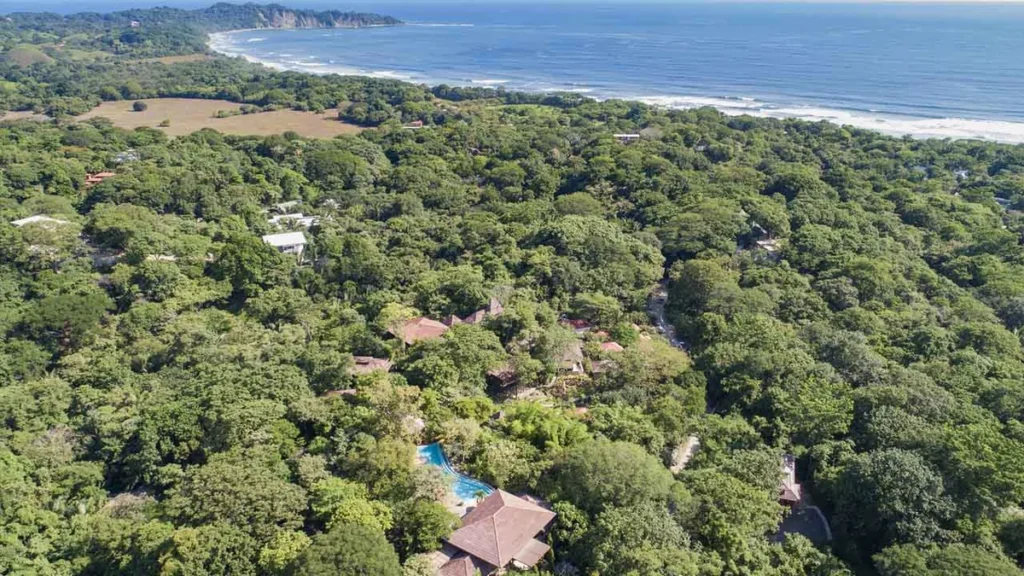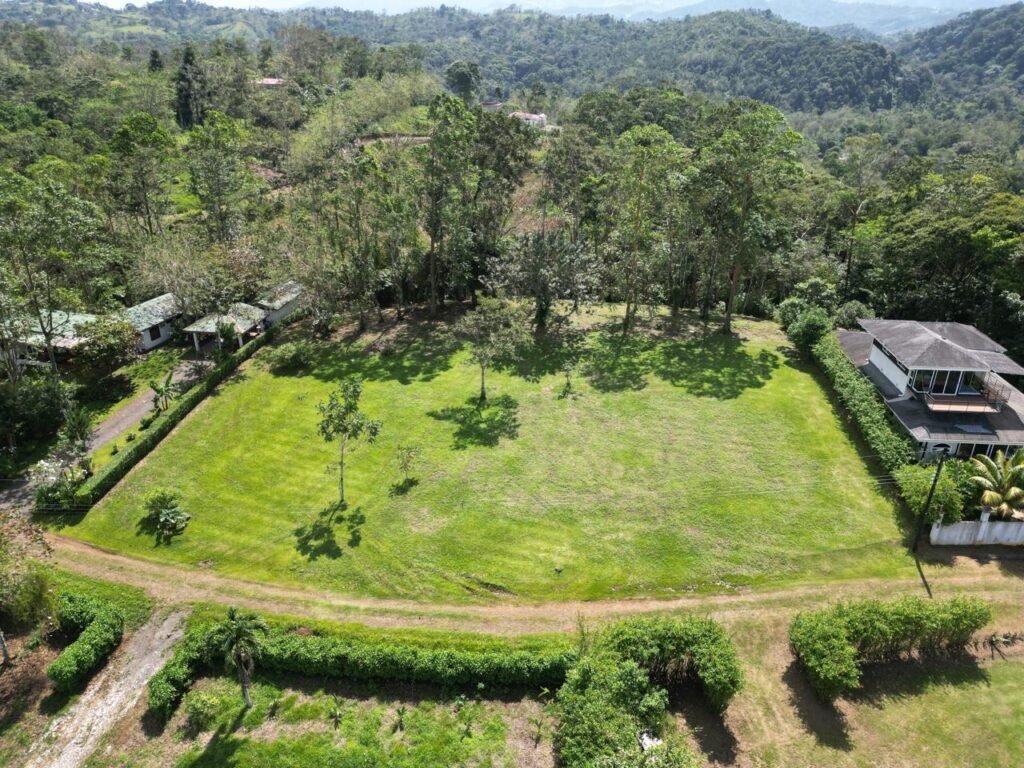Nosara offers a unique blend of surf, nature, and sustainable development that makes it an attractive market, and this guide helps you navigate buying land, choosing locations, and assessing returns. You’ll learn legal steps, market trends, and practical strategies to protect your investment.

The Nosara Market Landscape
You’ll encounter a two-tier market: inland lots and eco-parcels priced from roughly $70,000, while coastal and ocean-view parcels commonly start near $200,000 and luxury villas range $700K–$2M. Short-term rentals around Playa Guiones often reach 50–70% occupancy across high season, so you can model income versus long-term appreciation. Local zoning favors low-density, sustainable development, so you’ll pay premiums for turnkey, eco-certified builds and properties with reliable water and road access.
Analyzing Demand: Who’s Buying and Why?
Nearly all buyers are motivated by lifestyle and income: retirees seeking quiet community living, surfers chasing year-round waves at Guiones, and remote workers buying for quality of life. International buyers—primarily from the U.S. and Canada—dominate listings, while local investors pick up undervalued inland lots. You’ll see strong demand for properties that combine rental potential with easy access to services and schools, boosting resale value.
Location Hotspots: The Hidden Gems of Nosara
Guiones remains the surf and rental epicenter, Playa Pelada draws locals and restaurants, and Ostional offers eco-tourism value with seasonal turtle nesting. You’ll find quieter, more affordable parcels inland near Nosara town for service access, while boutique developments present master-planned lots for long-term appreciation and easier permitting.
Drill into micro-location: parcels on higher ground near Guiones command premiums for ocean views and better drainage, which you’ll appreciate during rainy season, while lower-elevation lots closer to town shorten utility runs and attract renters who want quick market access. Road quality varies—paved access from main entrances improves year-round occupancy—so factor in maintenance or upgrade costs. Seek for projects that offer parcelization and planned infrastructure that can cut permitting time and attract steady buyer interest, making it a pragmatic option if you’re buying raw land to develop or hold for capital gains.
Investment Strategies for Success
Balance short-term income and long-term appreciation by diversifying: allocate a portion of your capital to vacation rentals and another to land or homes held for 8–15 years. Consider investing in master-planned neighborhoods like El Bosque Nosara (https://www.elbosquenosara.com/) for turnkey infrastructure and resale potential. Aim for cash-on-cash returns north of 6% on rentals while treating core properties as appreciation plays.
Short-term Rentals: Capitalizing on Tourism Trends
Tap Nosara’s surf and wellness market: high season (Dec–Apr) frequently yields 70–90% occupancy for well-marketed villas, shoulder season often falls to 40–60%. Example: a 3‑bedroom property booked 150 nights at $200/night grossed $30,000 before expenses; professional management, dynamic pricing, and targeted concierge services can push occupancy and nightly rates higher.
Long-term Gains: The Benefits of Holding Property
Holding property captures steady appreciation and rental income; using the Rule of 72, a 6% annual appreciation doubles value in about 12 years, so a $200,000 purchase could approach $400,000 over a decade-plus. Prioritize beachfront-adjacent lots, well-located homes, or serviced parcels in developments to benefit from limited supply and infrastructure-led value growth.
Factor in development timing and zoning: serviced lots in master-planned communities typically appreciate faster once roads, utilities, and amenities are delivered. You can accelerate returns by phasing builds—start with a modest rental unit to cover carrying costs while land value rises—then reinvest rental cash flow into expansion or higher-quality finishes for better resale margins.
Navigating Legalities and Regulations
Expect to work closely with a Costa Rican notary (notario público) and verify title at the Registro Nacional before closing; many transactions use a 30–60 day due diligence window to clear liens, easements, and cadastral discrepancies. Foreigners may hold property in their name or via a local corporation (S.A.), which often simplifies management and estate planning. Budget for a 1.5% transfer tax plus notary and registration fees, bringing typical closing costs to roughly 2–3% of the sale price.
Understanding Local Property Laws
You’ll find that Costa Rican law grants foreigners the same real estate rights as nationals, but titles must be cleared through the National Registry and a certified notary-deed (escritura) recorded. Inspect the cadena de títulos back 20–30 years to spot unresolved servitudes or easements; a title insurance policy or confirmed cadenas reduces risk. Expect municipal property taxes to be calculated on registered cadastral value and factor that into long-term operating costs.
Essential Permits and Zoning Considerations
Municipal zoning, coastal maritime-terrestrial setbacks, and environmental approvals from SETENA often determine buildable area and allowable density; subdivisions, larger clearings, or developments near wetlands typically trigger additional reviews. Verify zone classification and permitted uses with the Municipalidad de Nicoya and request existing permiso de uso del suelo or plano regulador notes. Some developments offer pre-planned parcels with zoning clarity that streamline permitting.
Typical permit checklist includes municipal building permits (permiso de construcción), ocupación/permiso de habitabilidad, SETENA environmental clearance for projects meeting impact thresholds, potable water and septic approvals, and electrical hook-up permits; protected tree removal or mangrove buffers require MINAE notifications. Timelines range from weeks for basic permits to 3–9 months for SETENA-level EIAs, so align purchase timelines with permit lead times and budget contingency costs for required mitigation measures.
Financial Fundamentals: Budgeting Your Investment
Map out a clear cash plan: expect transfer tax around 1.5% of the sale price, notary and registry fees roughly 0.5–1.5%, legal costs 1–2%, and agent commissions commonly 5–6% (often paid by sellers but factor it in). Set aside 3–6 months of operating capital for utilities, property management and vacancy if renting. Annual property tax typically sits near 0.25% of registered value. Add a 10–20% contingency for site works, furnishings or unexpected permits, especially on raw land or remodels.
Cost Breakdown: Beyond the Purchase Price
Title searches, surveys and due diligence commonly run $1,000–$5,000 depending on complexity; environmental or topographic studies can push that higher for jungle lots. Infrastructure hookups, road access and septic/water systems often add $10k–$50k on undeveloped parcels. HOA or master-plan development fees apply in some neighborhoods, where infrastructure investment raises lot values but adds monthly or annual maintenance charges you must budget for.
Financing Options: Navigating Loans and Mortgages
Local banks offer mortgages with tighter LTV for foreigners—expect 50–60% LTV and interest rates commonly between 6–9% depending on term and currency; residents may secure up to 70% LTV. Seller financing appears frequently with down payments of 20–40% and negotiable interest rates; private lenders and international mortgages give alternative terms but typically require stronger documentation and higher rates. Always get pre-approval and compare APR, fees and amortization schedules.
For example, on a $300,000 purchase with 60% LTV you’d borrow $180,000 and need $120,000 down; a 20-year loan at ~7% would mean roughly $1,350–$1,450 monthly principal and interest, plus insurance and taxes. You should request amortization tables from lenders, confirm whether rates are fixed or variable (USD vs CRC), and check for prepayment penalties. Consider construction or phased payments for land purchases in developments to align draws with improvements and reduce idle interest costs.
Building Local Connections: The Importance of Network
Tap into Nosara’s tight-knit network by attending open houses, weekly farmers’ markets, and volunteer clean-ups; you’ll meet owners, contractors, and municipal staff who can flag zoning quirks or road-access issues before you bid. Local referrals often save weeks of legwork—investors who leverage community intel typically close faster and avoid surprises. Ask neighbors about infrastructure timelines and HOA rules.
Engaging with Local Real Estate Agents
You should interview at least three local agents and request 12 months of closed-sales comps, current listings, and rental performance for comparable properties. Ask for client references, proof of local licensing, and examples of transactions in neighborhoods like Playa Guiones and El Bosque Nosara. Negotiate a written marketing plan and timeline; top agents will introduce you to vetted contractors, property managers, and the notary you’ll need for closing.
Leveraging Community Resources for Insight and Support
Use surf schools, yoga studios, expat forums, hardware stores, and neighborhood associations for hyper-local insight on seasonal access, water availability, and tourist demand patterns. Visit the municipal office for land-use maps and utility extension plans, and join local Facebook or WhatsApp groups for contractor recommendations and real-time alerts. These sources often reveal easements, recent road upgrades, or planned infrastructure that directly affect land value and rental potential.
Attend monthly town meetings and request five years of permit records at the municipal office to verify zoning and development history. Track seasonality—Dec–Apr drives peak occupancy—and validate rental demand by checking booking calendars with local property managers. Ask neighbors about septic performance and well depths, and confirm planned utility timelines before committing to a parcel.
Conclusion
Presently you want to invest in Nosara real estate, focus on market trends, due diligence, and sustainable developments to protect your upside; work with local professionals to navigate legal and financing details. Prioritize locations with strong rental demand and infrastructure.
